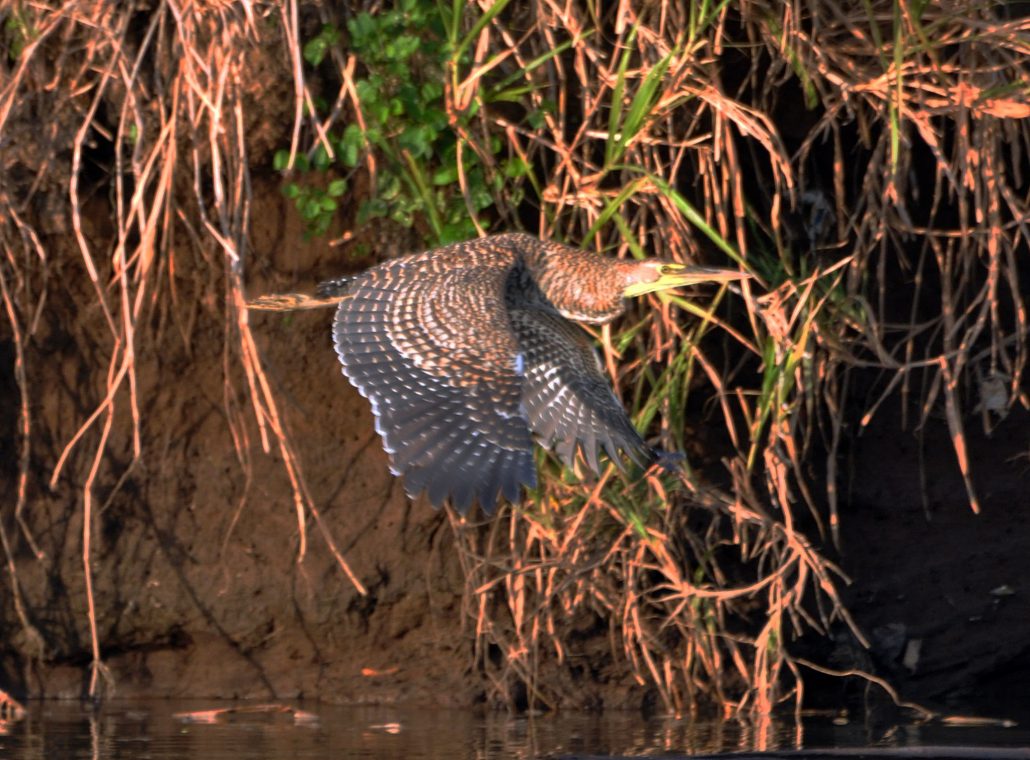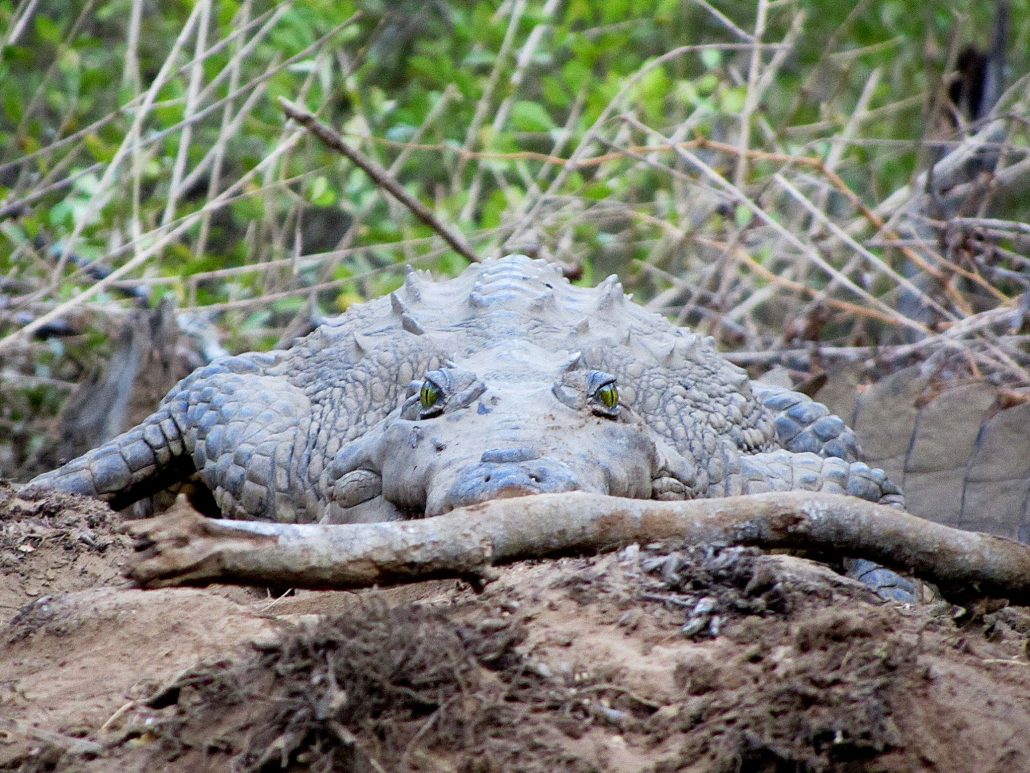One of Costa Rica's seemingly greatest contrasts, spectacular Palo Verde National Park is home to a resounding dichotomy: rich and vibrant wetlands that simultaneously house one of the world's foremost examples of tropical dry forest.
A contradiction, indeed, and one that works beautifully.
Palo Verde's unique setting is owed to the Río Tempisque, which ebbs and flows over this otherwise arid region. The result is somewhat other-worldly, with sun-drenched dry forest unfolding over parched limestone, which then cozies up to rushing river and muddy habitats.
It's a major watershed, a protected wildlife sanctuary, and an important dry forest, all rolled into one. And it's absolutely fascinating.

Named for a species of green stick, or palo verde, that is so often present in Costa Rican marshes and wetland habitats, Palo Verde is one of Costa Rica's most biodiverse destinations. And that's saying something, considering that Costa Rica boasts some of the most concentrated biodiversity on the entire planet. And with that, we'll jump straight in to the accolades: Palo Verde has been declared a "Wetland of International Importance," by the Ramsar Convention on Wetlands. In other words, this is one of the most ecologically diverse places in Costa Rica and one of the world's most significant wetlands. You know it's going to be good. Housed within just over 45,000 acres, Palo Verde National Park is home to 15 distinct habitats – a result of varied land, chemical compositions, and geological conditions. The result is a park of spectacular natural beauty and diversity, including lagoons and marshes, deciduous forests and plains, limestone hills and riverside forests, wooded savannahs and saltwater mangroves, among many others. And that brings us to Palo Verde's main attraction: wildlife! This incredible – and incredibly dense – biodiversity means that Palo Verde National Park is also a haven for thirsty wildlife, especially during the long dry season (November through March), when every last drop of water is sucked from the soil. In contrast to this parched and cracked land, marshy riverbanks stand as life-giving oasis. And oh, what an oasis it is! Palo Verde plays annual host to more than 300 bird species, including the greatest concentration of shorebirds and waterfowl in Central America. In fact – and just imagine it! – up to 250,000 birds can be found here. That's a quarter-million birds, all living in one national park. And, indeed, birdwatching is Palo Verde's biggest and most important attraction. During the dry season, thirsty fowl concentrate around the river, while during the wet season, floodwaters rise to form welcoming marshes that attract migrating birds, flying south to escape the winter.
Without a doubt, the reason to visit Palo Verde National Park is for its wildlife. In a world where animal sightings are never a given, it's almost impossible to visit Palo Verde without spotting something that takes your breath away. Again, remember, up to 250,000 birds live here, all at one time. With such a high concentration of migratory birds and resident waterfowl, you're likely to spot many species – herons, egrets, storks, ibis, spoonbills, grebes and ducks, among them. Additionally, if you look into the tropical forest that surrounds, you'll also spot toucans, parrots, and the only native colony of scarlet macaws in the dry Pacific. Yes, Palo Verde is a special place. And, while we don't want to hit you with a laundry list of the 300 bird species you could spot here, we do want to impress you a little. So, we'll just give you a taste of what you could spot, specifically: great egrets and anhingas, pink heron and snowy egrets, green-backed herons and roseate spoonbills, snail kites and blue-winged teals, northern shovelers and black-necked stilts, black-crowned night herons and cattle egrets, great currasows and American widgeons, among many (many!) others. And, while they're easy to overlook in the bird-watching scramble, many bucket-list mammals and reptiles also make their home in Palo Verde. Keep your eyes and ears peeled for white-faced monkeys, white-nosed coatis, collared peccaries, American crocodiles, howler monkeys, armadillos, jaguarondi, and even white-tailed deer, Costa Rica's national symbol. (We know – not what you expected, right?!) Flora fanatics, we haven't forgotten you, either! In addition to a full menu of aquatic plant species – gamalote, trista, and tifa grass, among them – Palo Verde is home to stunning trees, including the majestic ceiba and potbellied ceibo, as well as pochote, glassywood, medlar, javillo, rosewood, and guayabón.
Palo Verde National Park Overview:
Location: 16 miles south of Bagaces Founded: 1978 Maximum Altitude: 879 feet (267 meters) above sea level Area: 45,492 acres (divided into two sectors: Las Pailas and Santa Maria) Hours: 8 a.m. to 5 p.m. Telephone: 2200-0125 or 2661-4717 Entrance Fee: $12 adults / $5 childrenAttractions:

Named for a species of green stick, or palo verde, that is so often present in Costa Rican marshes and wetland habitats, Palo Verde is one of Costa Rica's most biodiverse destinations. And that's saying something, considering that Costa Rica boasts some of the most concentrated biodiversity on the entire planet. And with that, we'll jump straight in to the accolades: Palo Verde has been declared a "Wetland of International Importance," by the Ramsar Convention on Wetlands. In other words, this is one of the most ecologically diverse places in Costa Rica and one of the world's most significant wetlands. You know it's going to be good. Housed within just over 45,000 acres, Palo Verde National Park is home to 15 distinct habitats – a result of varied land, chemical compositions, and geological conditions. The result is a park of spectacular natural beauty and diversity, including lagoons and marshes, deciduous forests and plains, limestone hills and riverside forests, wooded savannahs and saltwater mangroves, among many others. And that brings us to Palo Verde's main attraction: wildlife! This incredible – and incredibly dense – biodiversity means that Palo Verde National Park is also a haven for thirsty wildlife, especially during the long dry season (November through March), when every last drop of water is sucked from the soil. In contrast to this parched and cracked land, marshy riverbanks stand as life-giving oasis. And oh, what an oasis it is! Palo Verde plays annual host to more than 300 bird species, including the greatest concentration of shorebirds and waterfowl in Central America. In fact – and just imagine it! – up to 250,000 birds can be found here. That's a quarter-million birds, all living in one national park. And, indeed, birdwatching is Palo Verde's biggest and most important attraction. During the dry season, thirsty fowl concentrate around the river, while during the wet season, floodwaters rise to form welcoming marshes that attract migrating birds, flying south to escape the winter.
Trails:
While most visitors to Palo Verde National Park view the sights by boat, several trails do wend through the park's tropical dry forest. They include El Mapache Trail, La Venada Trail, El Manigordo Trail, and Calizas Trail. Note that Palo Verde's trails play a very, very distant second fiddle to boat tours. Please consult a park ranger before setting out on any trail, as current conditions depend heavily on weather conditions.Flora and Fauna:

Without a doubt, the reason to visit Palo Verde National Park is for its wildlife. In a world where animal sightings are never a given, it's almost impossible to visit Palo Verde without spotting something that takes your breath away. Again, remember, up to 250,000 birds live here, all at one time. With such a high concentration of migratory birds and resident waterfowl, you're likely to spot many species – herons, egrets, storks, ibis, spoonbills, grebes and ducks, among them. Additionally, if you look into the tropical forest that surrounds, you'll also spot toucans, parrots, and the only native colony of scarlet macaws in the dry Pacific. Yes, Palo Verde is a special place. And, while we don't want to hit you with a laundry list of the 300 bird species you could spot here, we do want to impress you a little. So, we'll just give you a taste of what you could spot, specifically: great egrets and anhingas, pink heron and snowy egrets, green-backed herons and roseate spoonbills, snail kites and blue-winged teals, northern shovelers and black-necked stilts, black-crowned night herons and cattle egrets, great currasows and American widgeons, among many (many!) others. And, while they're easy to overlook in the bird-watching scramble, many bucket-list mammals and reptiles also make their home in Palo Verde. Keep your eyes and ears peeled for white-faced monkeys, white-nosed coatis, collared peccaries, American crocodiles, howler monkeys, armadillos, jaguarondi, and even white-tailed deer, Costa Rica's national symbol. (We know – not what you expected, right?!) Flora fanatics, we haven't forgotten you, either! In addition to a full menu of aquatic plant species – gamalote, trista, and tifa grass, among them – Palo Verde is home to stunning trees, including the majestic ceiba and potbellied ceibo, as well as pochote, glassywood, medlar, javillo, rosewood, and guayabón.


